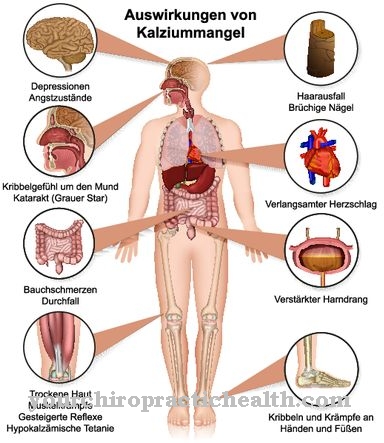A Pet hair allergy or Allergy to pets is an allergic reaction and hypersensitivity disorder to the hair, dandruff, feces and urine of pets. But sweat, feathers, sebum and saliva can also trigger an animal hair allergy. Arguably the most common form of this pet allergy is related to cats. Allergic reactions to rabbits, dogs and birds are significantly less common.
What is a pet hair allergy?

As Pet hair allergy are allergic reactions of humans to contact with hair or feathers of a certain animal species.
The reaction can occur in either only one or a few animal species. However, multiple allergies to many different animal species are known, which are collectively referred to as animal hair allergies.
The symptoms are similar to the typical allergic symptoms and cause runny nose and heavy sneezing, for example. Around 40% of all allergy sufferers suffer from an animal hair allergy.
causes
The Pet hair allergy is in the narrower sense not a real allergy to the hair of the respective animal, but to allergens that also occur in saliva, urine or the skin flakes of the animal species.
The most common cause of the allergic reaction is that the allergy sufferer comes close to the animal and inhales the allergens in this way. An animal stall, for example, can be empty, and yet the faeces in uncleaned boxes are enough to trigger allergic symptoms. Dust particles or hair that float in the air and are inhaled are often sufficient.
As with any other allergy, the allergens usually enter the body through the nasal mucous membranes and are unnecessarily classified as dangerous by the body. The human immune system therefore starts a strong defense against the allergen, which causes the symptoms. An animal hair allergy can either have been present since birth, but it can also develop spontaneously and apparently without an apparent cause.
Symptoms, ailments & signs
An animal hair allergy can cause completely different symptoms depending on the patient or allergen. The most common are signs of illness that are similar to those of a cold. After contact with animal hair, the throat often scratches, and the mucous membranes in affected patients often swell.
This leads to a runny or blocked nose. Many allergy sufferers also have to sneeze heavily and frequently. The eyes redden and can itch badly and water. Many allergy sufferers complain of a dry, irritable cough after contact with an animal to which they are allergic. In more severe cases, shortness of breath or bronchial asthma can occur. Those affected then complain of problems breathing out.
Depending on the disposition and the type of contact with the allergy-causing animal, symptoms on the skin are also observed. Then redness, swelling or even extensive eczema appear. Symptoms on the skin are particularly common when the animal hair comes into contact with the skin for a longer period of time and when the skin is already injured or diseased. Even small scratches on the skin caused by an animal can trigger these skin symptoms. Depending on the severity of the symptoms, concentration disorders or problems falling asleep are possible as effects of an animal hair allergy.
Course of disease
If the Pet hair allergy has existed since birth or is already known, the symptoms appear quickly after the first contact with an allergen. When entering an animal shed or when petting a pet, the allergy sufferer begins to develop severe runny nose, sneeze and possibly also develop reddening of the skin.
Once the allergy sets in, which often happens with children, the patient can initially handle the animal free of symptoms for a while. The symptoms appear spontaneously and suddenly, and direct contact with the animal intensifies them. The allergy test will produce a positive result, even if it was negative a short time ago. After the first appearance of the symptoms, the animal hair allergy will always become noticeable in the future when the patient comes near the allergen or the carrier animal. In severe cases, more severe symptoms such as shortness of breath or asthma can develop over time.
Complications
As a rule, serious complications are not to be expected with an animal hair allergy. As long as the patient is aware of his or her ailment, avoids the allergenic substances and has also learned how to react in the event of an acute attack, there is no serious danger to the health or life of the person concerned. Nonetheless, even if treated, a pet hair allergy can get worse over time.
In these cases, symptoms such as runny nose and reddening of the skin increase, and there may also be shortness of breath, nausea and vomiting. Serious complications can only be expected if the patient does not know that he is allergic to a certain pet and has an unexpected severe attack.
In these cases, in addition to the typical side effects, a panic attack can occur, which is accompanied by shortness of breath and a racing heart. In the worst case, the affected person suffers a shock, which can lead to a life-threatening circulatory collapse. In this case the patient's life is at risk.
In addition to physical complaints, an animal hair allergy is also regularly associated with psychosocial problems. The separation from a pet is very stressful for many people, and if there is a close emotional bond, the separation can even lead to depression that requires therapy. In addition, there are often emotionally stressful disputes within the family when an animal is no longer tolerated in the common living area or is even to be given away because of an allergy.
When should you go to the doctor?
Constant sneezing, runny nose and itchy skin in the vicinity of hairy animals are signals that the affected person should have a doctor examine. Mostly it is not a dangerous restriction in which the patient's breathing can be severely affected if they come into contact with the allergen. However, the diagnosis of animal hair allergy also means that the symptoms of the disease can only improve if contact with animals is avoided immediately. Exceptions are animal species or breeds that are safe for those allergic to animal hair, as they have no hair or hair that does not cause allergy symptoms.
Although most of those affected will already suspect that they are suffering from an allergy to animal hair, a reliable diagnosis is important for two reasons. First of all, the doctor can rule out that it is another disease and that the occurrence in connection with contact with animals was coincidental. Furthermore, if an animal hair allergy is suspected, the doctor will also test for other potential allergenic substances, since allergies often occur together with others. As a person affected, you can be sure that you will not accidentally come into contact with another allergen that you have not yet known about.
Treatment & Therapy
The treatment of any allergy includes avoiding contact with the allergen as much as possible. With a light one Pet hair allergy keeping pets is not yet ruled out - daily cleaning of carpets, carpets or textile pet equipment is necessary to keep the living space allergen-free. Another person should brush the animal regularly or clean its habitat appropriately so that flakes of skin or feces cannot worsen the animal hair allergy.
In severe cases, the animal has to be given away - for example, if the meticulous cleaning of the living space has not improved the condition. Cats in particular have to be given away immediately if they show allergic reactions, because the allergens associated with them cannot be removed by normal cleaning. Other people must be notified of the animal hair allergy and are not allowed to wear clothes with dangerous animal hair hanging on them.
Aftercare
In principle, no special aftercare is required for animal hair allergies. This is due to the fact that the allergic symptoms subside as soon as the causative source is no longer within the patient's reach. It is fundamentally not possible to cure the animal hair allergy. Depending on the severity of the allergic reactions, a slight allergy can be treated and suppressed with antiallergic drugs, even if the triggering animal remains in the patient's environment.
In most cases, however, follow-up care is provided to the extent that a constant inventory of the antiallergic therapy and the agents used and their dosage is carried out. An allergist can assess and adjust the examinations and the dosage of the drugs used. In the case of a severe allergy to animal hair, it is imperative that the patient does not come into further contact with the trigger.
If there is no longer any contact with the animal hair, the symptoms subside completely within a short time. After acute treatment, it is generally not to be expected that special follow-up care will be required for the patient. It is your own responsibility to ensure that the contact with the trigger does not take place again, as the symptoms of the disease would immediately reappear in full.
You can do that yourself
In everyday life, symptoms of an animal hair allergy are best avoided if the relevant allergen is avoided. However, this is not always possible, because contact with different animals can also arise unexpectedly. In the area of self-help, however, those affected by an animal hair allergy can still do a lot to alleviate their individual symptoms.
For example, there are antihistamines available in the pharmacy without a prescription in the form of juices or tablets, which, when used as intended, are also well tolerated within a reasonable time frame. Such products can also be taken before expected contact with animal hair in order to avoid the typical symptoms of the allergy. So-called desensitization therapy is often helpful for everyday life. The specialist can advise here whether such a therapy is suitable for the individual complaints.
Since an allergy is a sometimes severe reaction of the immune system, there are no options for treating an allergic shock without medical help. Precisely because an allergic shock can also cause the airways to swell, those affected must be able to assess their symptoms well. Friends and relatives should also be informed here so that they can act quickly in everyday life in an acute case. Severe allergic shock is always a medical emergency that requires medical attention more quickly.
























.jpg)



